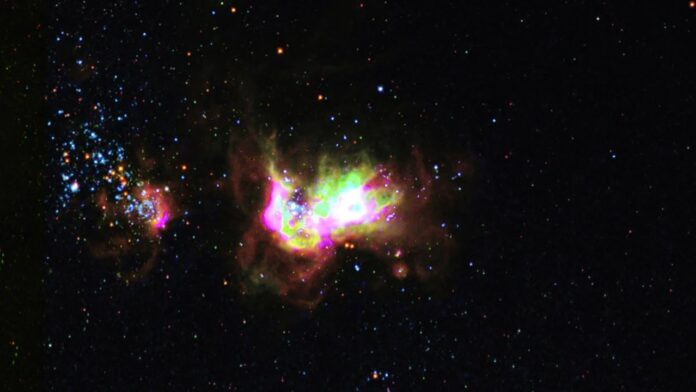The heavy element content (‘metallicity’) of the Universe is a record of the total star formation history. Gas-phase metallicity in galaxies and its evolution with time is of particular interest as a tracer of accretion and outflow processes.
However, metallicities from the widely used electron temperature (Te) method are typically approximately two times lower than the values based on the recombination line method. This ‘abundance discrepancy factor’ is well known and is commonly ascribed to bias due to temperature fluctuations.
The composition and distribution of heavier elements, particularly the ratio of oxygen to hydrogen, might help astronomers estimate how many and what kind of stars are being made in a distant object. The majority of elements, aside from hydrogen, helium, and lithium, are produced inside stars.
A study integrating data from telescopes on Earth and in the sky solves a conundrum for astronomers working in the infrared. It may improve studies with the James Webb Space Telescope and other telescopes of the Universe’s structure.
Yuguang Chen, a postdoctoral researcher working with Professor Tucker Jones in the Department of Physics and Astronomy at the University of California, Davis, said, “We’re trying to measure the composition of gases inside galaxies.”
The team used optical and infrared astronomy to measure oxygen abundance in dwarf galaxy Markarian 71. Located almost 11 million light-years from Earth, the galaxy is a Magellanic barred irregular dwarf galaxy.
They made observations with telescopes at the W.M. Keck Observatory in Mauna Kea, Hawaii. They used archived data from the recently decommissioned SOFIA flying telescope and the decommissioned Herschel Space Observatory.
The team used data from instruments: SOFIA (Stratospheric Observatory For Infrared Astronomy) and the Herschel Space Observatory. Using data from these instruments, scientists examined oxygen abundance in Markarian 71 while correcting for temperature fluctuations. They found that the result from collisionally excited infrared lines was still 50% less than that from the recombination line method, even after eliminating the effect of temperature.
The outcomes surprised scientists: There is no consensus on an explanation for the discrepancy. Scientists will now look at additional objects to figure out what properties of galaxies correlate with this variation.
Making infrared measurements of the makeup of distant galaxies in the first billion years of the Universe is one of the objectives of the James Webb Space Telescope, which will launch in 2022. A foundation for doing these measurements using the JWST and the Chilean Atacama Large Millimetre Array is provided by the new findings.
Journal Reference:
- Chen, Y., Jones, T., Sanders, R. et al. Accurate oxygen abundance of interstellar gas in Mrk 71 from optical and infrared spectra. Nat Astron (2023). DOI: 10.1038/s41550-023-01953-7
